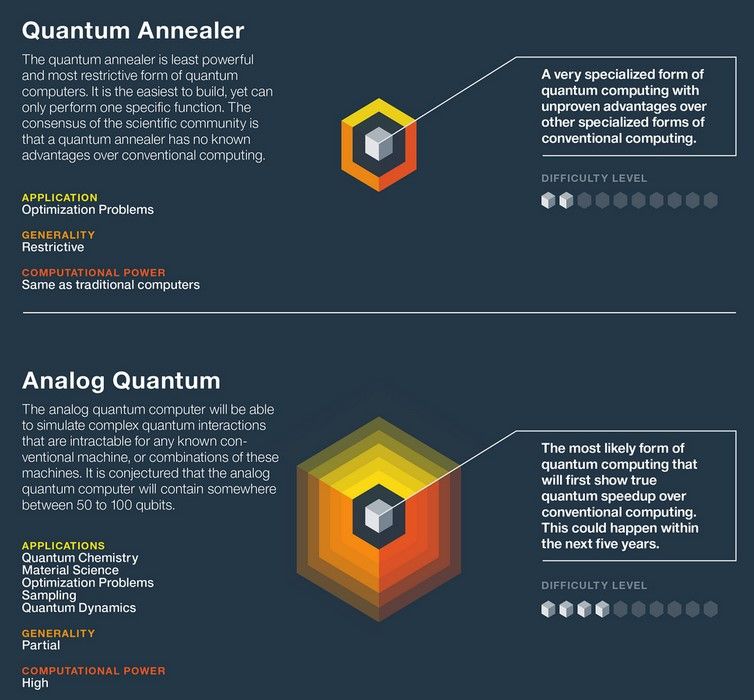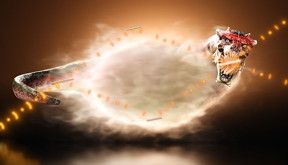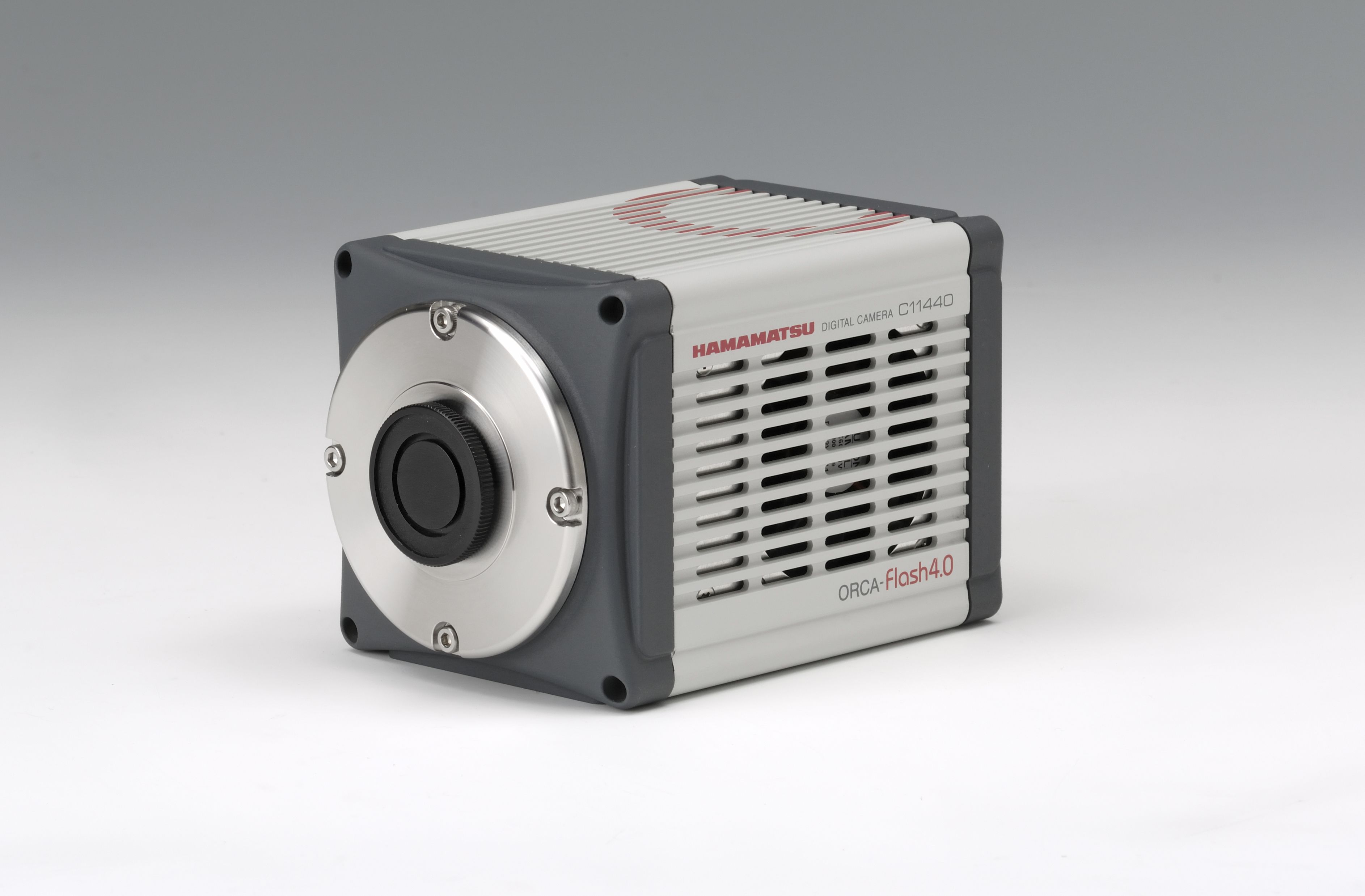An international team of scientists has set a new record for the complexity possible on a quantum computing chip, bringing us one step closer to the ultra-secure telecommunications of the future.
Image: Shutterstock.


A research team led by the University of Leeds has observed for the first time how HIV and Ebola viruses attach to cells to spread infection.
The findings, published today in the journal Angewandte Chemie (“Compact, Polyvalent Mannose Quantum Dots as Sensitive, Ratiometric FRET Probes for Multivalent Protein-Ligand Interactions”), offer a new way of treating such viruses: instead of destroying the pathogens, introduce a block on how they interact with cells.
Quantum dots are fluorescent crystals in which the color of the emitted light is dependent on the size of the crystal. (Image: Richard E. Cruise, University of Leeds)

Interesting position that IBM is taking with Quantum Computing. The one challenge that was highlighted in this article around unstable particles actually has been in the process of being resolved by Charles Marcus and colleagues at the University of Copenhagen’s Niels Bohr Institute; Univ. of Copenhagan’s report came out a few weeks ago and it may be a good thing for IBM to connect with the University so they can see how this was resolved.
Also, I don’t believe that we have 3 uniquely different platforms of Quantum as this article highlights. Trying to state that a D-Wave Quantum Computer is not a full Quantum platform or less of a Quantum Platform to is not a fair statement; and I encourage others to pull back from that perspective at this point until Quantum Computing is more evolved and standards around the platform is well defined and approved by industry. Also, the Gartner graph in this article is not one that I embraced given the work on Quantum is showing us the we’re less than 10 yrs away for it in the mainstream instead of Gartners graph showing us Quantum will require more than 10 years to hit the mainstream. And, I saw some of missed marks on Bio-sensors and BMI technology taking more than 10 years on the Gartner graph which is also incorrect since we hearing this week announcements of the new bio-chips which enables bio-sensors and BMIs are making some major steps forward with various devices and implants.
The 3 Types Of Quantum Computers And Their Applications by Jeff Desjardins, Visual Capitalist
It’s an exciting time in computing.
Just days ago, Google’s AlphaGo AI took an insurmountable lead in the 3,000 year-old game of Go against the reigning world champion, Lee Sedol. In a five-game series, the score is now 3–1 for the machine with one game left on March 15, 2016 in Seoul, South Korea.

Microsoft founder optimistic about embryonic technology.
Researchers could be using cloud-based quantum computing power to solve big scientific conundrums within the next decade, Microsoft founder Bill Gates has predicted.
The Microsoft founder turned philanthropist was hopeful about the future of the embryonic technology during an Ask Me Anything interview on Reddit.

Abstract: Since the 17th century, science was intrigued by the nature of light. Isaac Newton was certain that it consists of a stream of particles. His contemporary Christiaan Huygens, however, argued that light is a wave. Modern quantum physics says that both were right. Light can be observed both as particles and as waves — depending which characteristic is measured in an experiment, it presents itself more as one or the other. This so-called wave-particle dualism is one of the foundational principles of quantum physics. This questions our common sense: can one and the same indeed be of two contradictory natures at the same time?
https://www.youtube.com/watch?v=NIlmzFf19Mw
“We are from the future. Everything is going to be alright. The future is a beautiful place. But you will need some training in order to get there…” More: http://WeAreFromTheFuture.com
Words, Voice & Editing by Garret John LoPorto.
Connect on Facebook: http://on.fb.me/GarretJohn
& on Twitter: http://twitter.com/garretloporto
Music: “Time” by Hans Zimmer
Hans Zimmer feat. Satellite Empire — Time (The Machinist Remix)
Science:
“Quantum mechanics explains efficiency of photosynthesis”
“Energy transfer in light-harvesting macromolecules is assisted by specific vibrational motions of the chromophores,” said Alexandra Olaya-Castro (UCL Physics & Astronomy), supervisor and co-author of the research. “We found that the properties of some of the chromophore vibrations that assist energy transfer during photosynthesis can never be described with classical laws, and moreover, this non-classical behaviour enhances the efficiency of the energy transfer.”
“The negative values in these probability distributions are a manifestation of a truly quantum feature, that is, the coherent exchange of a single quantum of energy,” explained Edward O’Reilly (UCL Physics & Astronomy), first author of the study. “When this happens electronic and vibrational degrees of freedom are jointly and transiently in a superposition of quantum states, a feature that can never be predicted with classical physics.”
http://www.ucl.ac.uk/news/news-articl…
Text from video:
“Greetings… We are from the future. Everything is going to be alright. The future is a beautiful place … But you will need some training in order to inhabit it.

Digital CMOS camera with QE technology with improved photon detection capabilities — now this should interest to many medical departments, researchers, and even for security checkpoint screening.
Hamamatsu Corporation has again raised the bar in scientific CMOS camera performance with the 2016 version of the ORCA-Flash4.0 V2. The increased quantum efficiency (QE), now at a peak of 82%, increases the likelihood of detecting the faintest of signals, helping to answer the question “Is it there?” And, for brighter samples, higher QE translates into shorter exposure times without sacrificing image quality. The ORCA-Flash4.0 V2 opens up new possibilities for imaging in low conditions and improves signal to noise at all light levels.
Since its introduction and evolution, the ORCA-Flash4.0 series has become the favorite scientific CMOS camera of investigators everywhere, powering cutting-edge imaging research in every field from biology and chemistry to astrophysics and nanotechnology. The widespread appeal is due to the vast array of high-performance features: low read noise, large field of view, high dynamic range and fast frame rates. The newly enhanced QE of the “Flash V2” only serves to increase the power and versatility of this game-changing camera.
The ORCA-Flash4.0 V2 is available and shipping now. What breakthrough will you make with your extra photons?


I do believe we’re within a 7 to 8 yr window at this point with Quantum hitting the broader main stream computing infrastructure. However, we have banks in Europe that have been using the technology for network communications, Los Alamos Labs experimenting since late 2011 with Quantum Internet, now China is launching their own Quantum Satellite for wireless communications; so I do suggest a strategy needs to be developed over the next 2 to 3 yrs for government & industry around how to manage & plan for deployment of Quantum especially with China & Russia’s interest.
New research demonstrating that quantum computing is now just an engineering challenge moves the possibility of encryption-cracking machines to the front burner.

Google, AI, and Quantum — Google believes deep learning is not suitable on Quantum. Not so sure that I agree with this position because deep learning in principle is “a series of complex algorithms that attempt to model high-level abstractions in data by using multiple processing layers with complex structures” — the beauty around quantum is it’s performance in processing of vast sets of information and complex algorithms. Maybe they meant to say at this point they have not resolved that piece for AI.
Artificial intelligence is one of the hottest subjects these days, and recent advances in technology make AI even closer to reality than most of us can imagine.
The subject really got traction when Stephen Hawking, Elon Musk and more than 1,000 AI and robotics researchers signed an open letter issuing a warning regarding the use of AI in weapons development last year. The following month, BAE Systems unveiled Taranis, the most advanced autonomous UAV ever created; there are currently 40 countries working on the deployment of AI in weapons development.
Those in the defense industry are not the only ones engaging in an arms race to create advanced AI. Tech giants Facebook, Google, Microsoft and IBM are all engaging in various AI-initiatives, as well as competing on developing digital personal assistants like Facebook’s M, Cortana from Microsoft and Apple’ Siri.